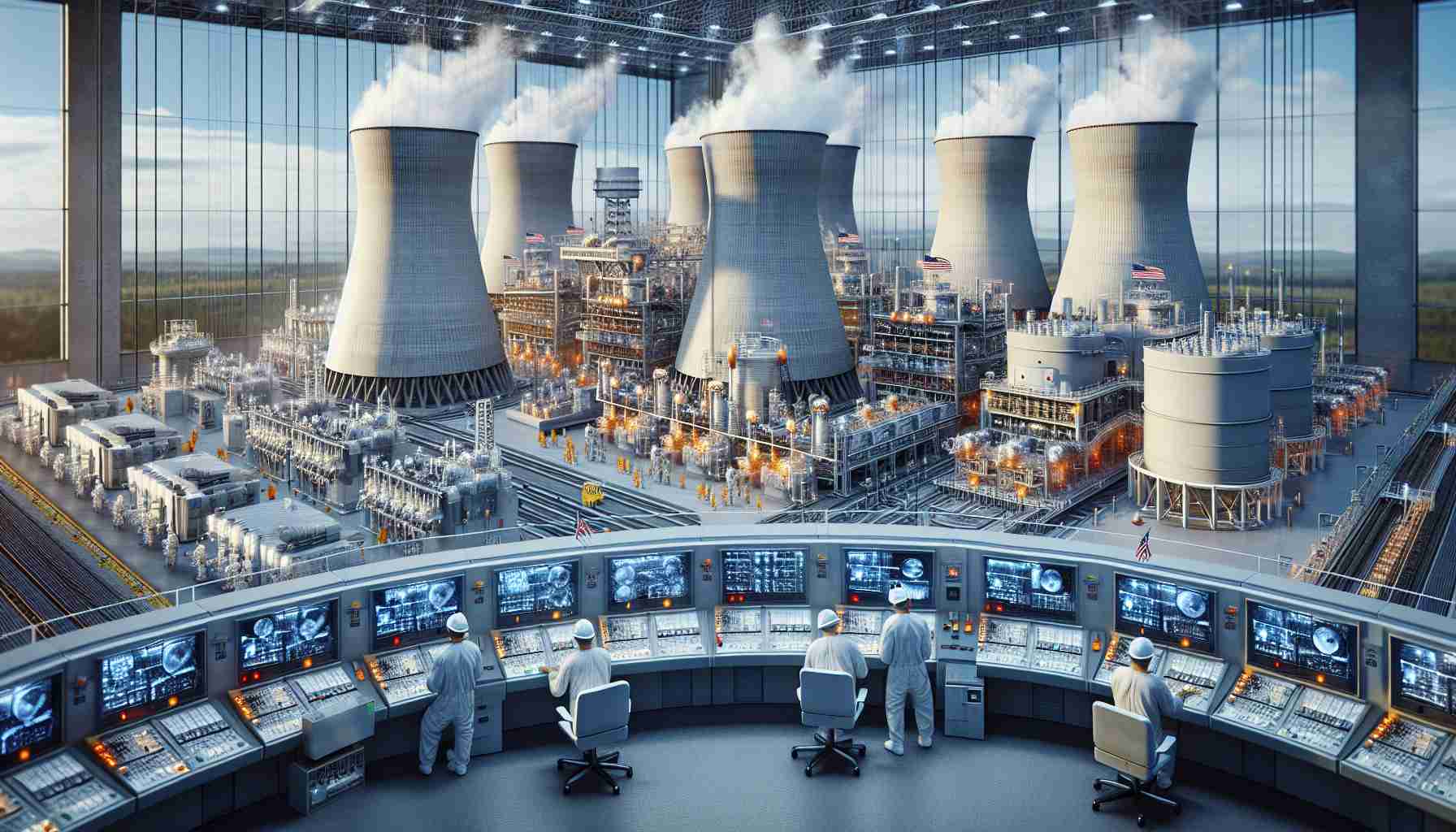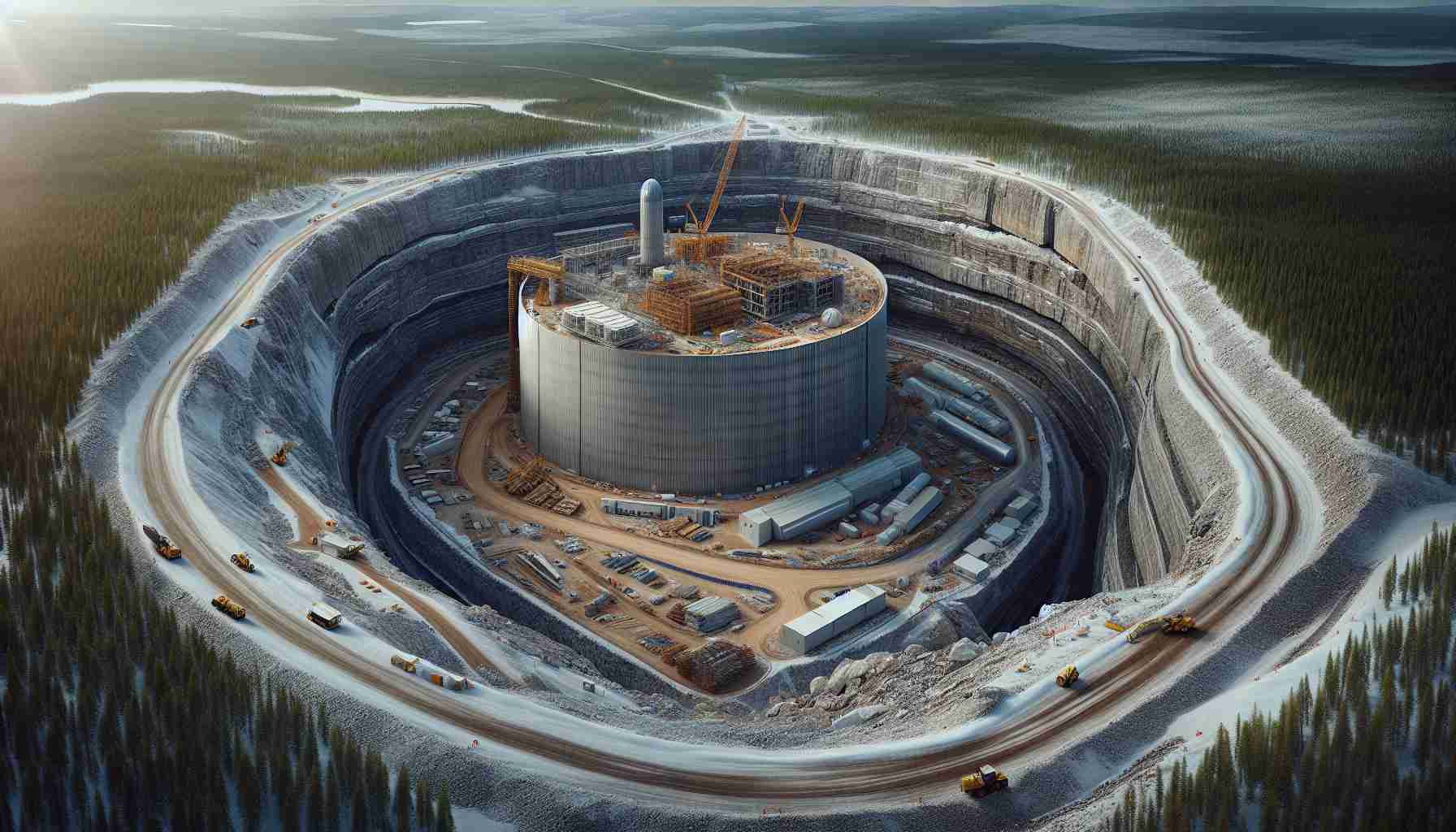A new era in nuclear energy is dawning as a coalition of companies, led by GE Vernova, gears up to introduce small modular reactors (SMRs) in the United States. The spotlight is on the BWRX-300, a cutting-edge technology developed by GE Hitachi Nuclear Energy. With financial backing of $800 million sought from the U.S. Department of Energy’s Generation III+ SMR initiative, the project aims for a startup by 2033 at the Clinch River site in Tennessee, in collaboration with the Tennessee Valley Authority (TVA).
This innovative SMR technology promises not only reliable power generation but also cost-effectiveness. The BWRX-300 relies on established reactor technology and easily available fuel types, ensuring that it does not necessitate high-assay low-enriched uranium for operation.
Increasing the momentum, GE Vernova, spun off from General Electric, has combined efforts with multiple utilities and supply-side partners to push this initiative forward, as noted by their CEO. The broad coalition includes industry leaders like Bechtel, Duke Energy, and the Electric Power Research Institute, all joining forces to streamline the development and deployment of SMRs.
Moreover, agreements between GE Hitachi and Duke Energy further accentuate their commitment, emphasizing collaborative licensing and design advancements for the BWRX-300 technology. As the project progresses, it may soon become a cornerstone of a cleaner and more sustainable energy landscape across the nation.
Transformative Potential of Small Modular Reactors
The emergence of Small Modular Reactors (SMRs) marks a pivotal shift in the global energy landscape, with significant implications for society, culture, and the economy. As nations grapple with climate change and energy demands, the introduction of technologies like the BWRX-300 could lead to a resurgence in nuclear energy, traditionally seen as controversial but now being recast as a sustainable solution. The deployment of SMRs could alleviate energy shortages in densely populated areas, reducing reliance on fossil fuels and thereby contributing to a decrease in greenhouse gas emissions.
On the cultural front, embracing nuclear energy through SMRs could reshape public perception. With safety enhancements and innovative design, communities may gradually overcome historical apprehensions, fostering a broader acceptance of nuclear power as a reliable energy source. This change could cultivate a culture of innovation and sustainability, attracting talent and investment into nuclear technology and its ancillary sectors.
Looking at the global economy, SMRs might create new jobs in manufacturing, construction, and plant operation, revitalizing local economies. Additionally, by providing stable power generation, these reactors can enhance energy security, crucial for industries and households alike. Nations pioneering this technology could gain a competitive edge in the energy sector, exporting expertise and equipment worldwide.
Finally, as climate concerns mount, environmental ramifications of SMRs are significant. Their ability to operate with lower emissions and a smaller environmental footprint compared to traditional reactors positions them as a promising alternative. In the quest for a cleaner future, the long-term significance of SMRs could evolve into a cornerstone for a sustainable energy grid, underscoring the necessity for ongoing investment and support in this transformative technology.
The Future of Nuclear Power: Small Modular Reactors Leading the Way
A New Era in Nuclear Energy
The landscape of nuclear energy is on the brink of transformation as innovative technologies, particularly Small Modular Reactors (SMRs), gain traction in the United States. A significant player in this movement is GE Vernova, which is at the helm of deploying the BWRX-300, a state-of-the-art SMR developed by GE Hitachi Nuclear Energy. This initiative is supported by a substantial financial bid of $800 million from the U.S. Department of Energy’s Generation III+ SMR initiative, with ambitious plans to see the reactor operational by 2033 at the Clinch River site in Tennessee, in collaboration with the Tennessee Valley Authority (TVA).
Advantages of Small Modular Reactors
SMRs like the BWRX-300 offer a variety of benefits over traditional nuclear power plants, helping to redefine the energy sector:
– Cost-Effectiveness: The BWRX-300’s design leverages existing reactor technology paired with readily available fuel types, minimizing costs associated with high-assay low-enriched uranium.
– Flexibility of Deployment: SMRs can be built in factories and shipped to sites, allowing for quicker and more efficient installations compared to large-scale reactors.
– Enhanced Safety Features: Designed with advanced safety protocols, SMRs are less prone to catastrophic failures due to their smaller size and simplified systems.
Collaboration and Support
The collaboration between GE Vernova and key industry partners such as Bechtel, Duke Energy, and the Electric Power Research Institute is vital for the advancement of the BWRX-300 project. Their joint efforts streamline the development and ensure compatibility across different utilities, facilitating smoother licensing and regulatory processes. The agreement between Duke Energy and GE Hitachi specifically underscores a commitment to innovation through collaborative licensing and design enhancements.
Potential Challenges
While the future looks bright for SMRs, several challenges could impede their widespread adoption:
– Regulatory Hurdles: Navigating the complex landscape of nuclear regulation can slow down the deployment of new technologies.
– Public Perception: Overcoming public skepticism about nuclear energy safety remains a crucial hurdle.
– Economic Viability: The initial investment in SMR technology, even if promising in the long term, requires significant upfront capital.
Market Insights
The push for SMRs comes at a time when there’s a growing demand for cleaner energy sources amidst global climate challenges. As governments worldwide strive for net-zero emissions, SMRs provide a viable option due to their low emissions and ability to operate alongside renewable energy sources.
Conclusion
The BWRX-300 represents a shift towards a more sustainable and reliable nuclear energy future. Through collaborative efforts and advancing technologies, Small Modular Reactors are set to play a crucial role in energy generation, paving the way for a cleaner energy landscape in the United States and beyond.
For further insights into advancements in nuclear technology, visit GE.
The source of the article is from the blog bitperfect.pe



